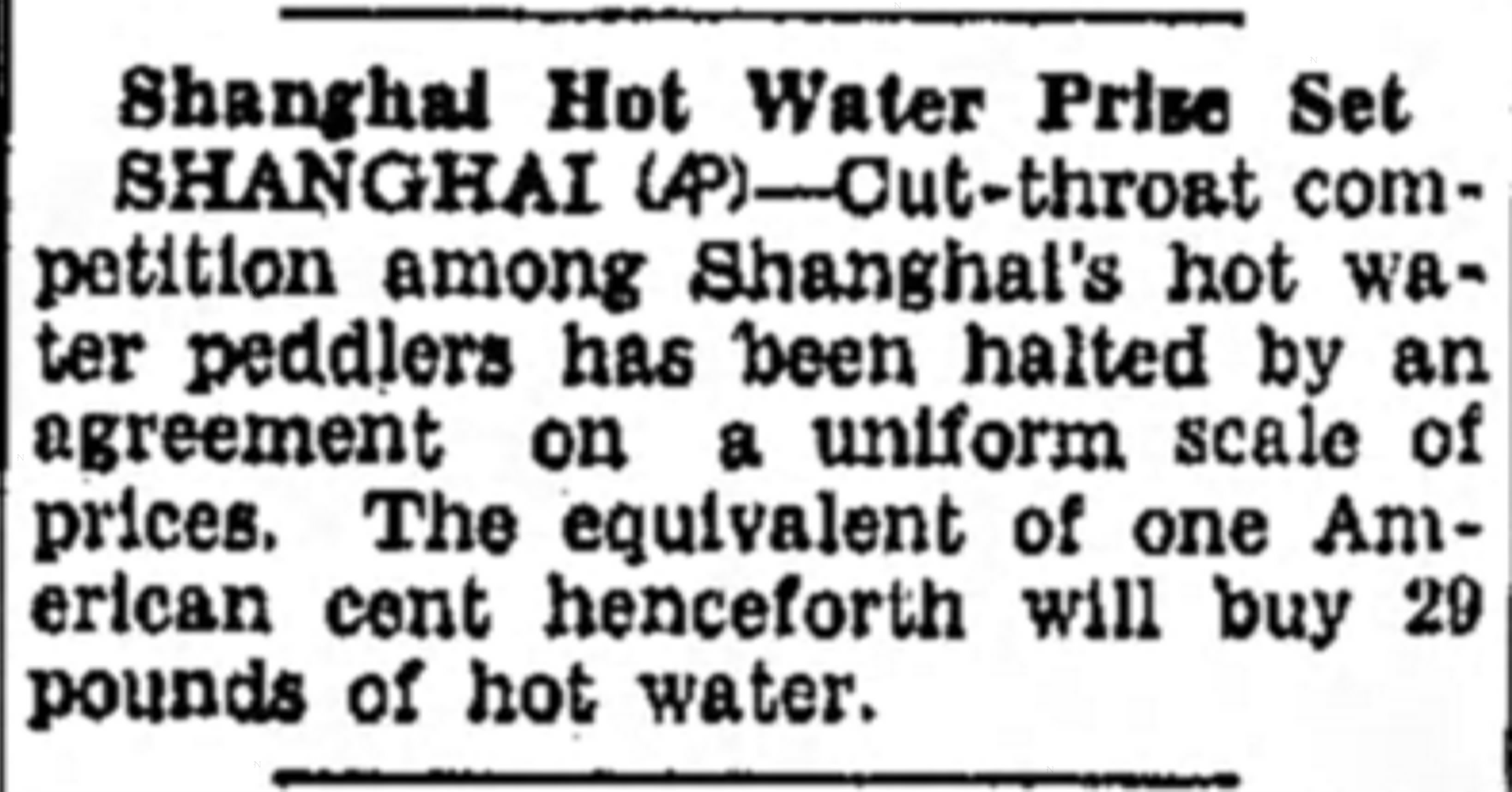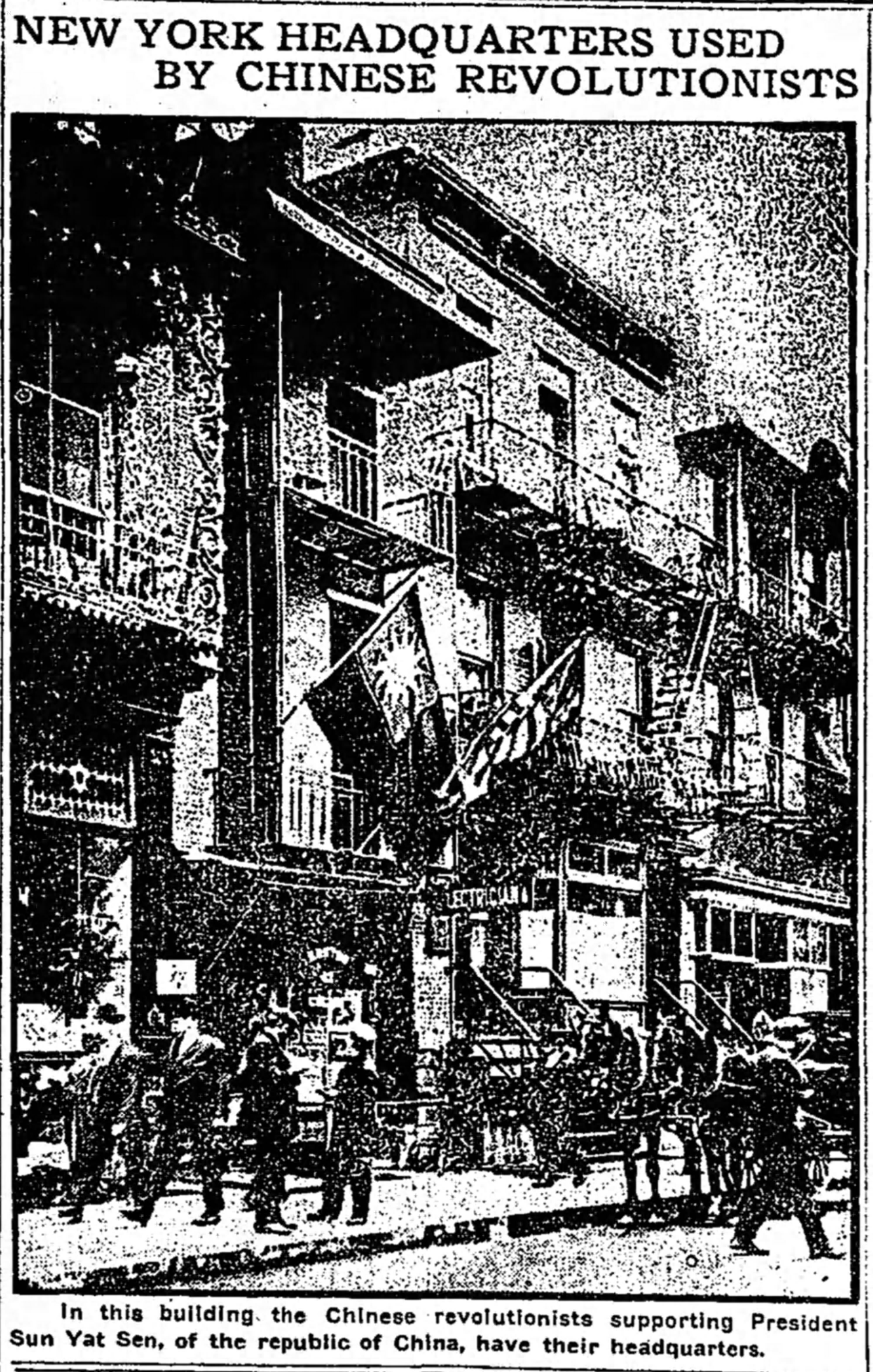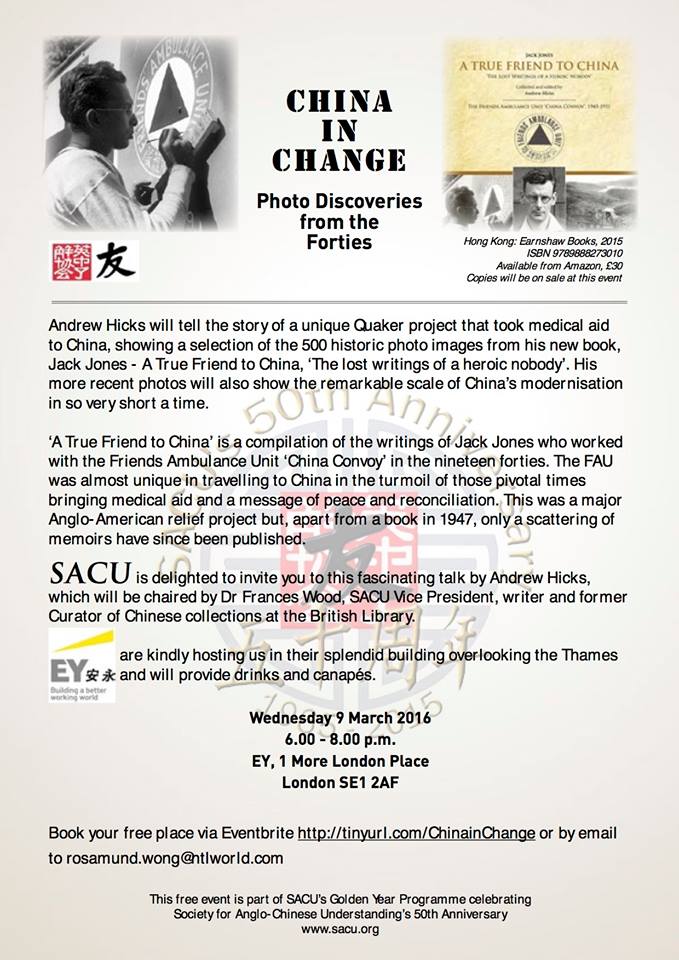Posted: March 12th, 2016 | No Comments »
When I was travelling around a bit promoting my 2009 book Through the Looking Glass, a history of the foreign press corps of China from the 1850s to 1949 a number of people remarked that they had not been aware that Ernest Hemingway visited China during the war and travelled reasonably extensively from Hong Kong up to Chungking. Sadly, these days, even fewer people know much about his travelling companion and then wife, the journalist and war correspondent Martha Gellhorn.
So Stuart Heaver’s recent piece in the South China Morning Post is a good reminder of that trip and those events. I’m happy to say it includes a quote or two from me and the man who wrote the dedicated book on the subject Peter Moreira. As well as the tales of their trip there a number of good photographs of the time and the characters involved. Do give the piece a read.

Posted: March 10th, 2016 | No Comments »
Miss Ternozouboff – harsh but fair? The Ternozoboff’s were a Russian brother and sister living in Shanghai in 1936. He got a bit carried away with the heroin and became an addict. To feed his fix he stole a watch and a bronze statue belonging to his sister. It wasn’t the first time – he’d stolen from her before to buy heroin, pawning the goods. The judge seems sympathetic to the addicted brother and asks her to drop the charge. No way, she replies – gaol would do him some good! (though said with tears in eyes). So of he went, for a month with no heroin, but some fruit and cakes from his sister. Sorry, no idea if he kicked the habit….

Posted: March 9th, 2016 | No Comments »
Charlie Chaplin passed through Shanghai on March 9th 1936…and announced he’d asked Paulette Goddard to marry him…then sailed for Hong Kong…

Posted: March 8th, 2016 | No Comments »
International Women’s Day seems a good time to remember the so-called “Amazon Brigade” that formed to fight for the establishment of the Chinese Republic in 1912….(click on it and the image should go larger)

Posted: March 8th, 2016 | No Comments »
The news that Palmer House in Singapore may be partially or wholly destroyed to build a MTR station is worrying. The former YMCA Metropolitan building, originally built in 1954, was sold in the late 1990s and renamed Palmer House. It is an excellent example of Streamline Moderne, a minimalistic architectural style that abandoned the sometime lavish and ostentatious decoration of the Art Deco movement in favour of simple, functional lines. Streamline Moderne is one of Singapore’s remaining architectural styles and perhaps the best Asian city for this type of architecture, any serious stroll around the city will see examples of it (though some have been destroyed). It is very important that Singapore recognise that heritage and keep it and not just deride it as post-war and not historic….
Singapore still retains a good crop of Streamline Moderne buildings that, together, offer an almost unique look at this architectural style – any lover of art deco should appreciate it as the later period and seeks its preservation…the examples below are a few favourites, but not in any way an exhaustive list…just punch “Streamline Moderne Singapore” into google image and you’ll find plenty more…

Tiong Bahru flats developed prior to WW2 – the blocks along Guan Chuan Street and Chay Yan Streets were nicknamed the “Aeroplane blocksâ€.
 Block 78 was known as Tiong Bahru Gor Lau (“5-story flat†in Hokkien). It was the highest public housing in Singapore when built in the late 1930s.
Block 78 was known as Tiong Bahru Gor Lau (“5-story flat†in Hokkien). It was the highest public housing in Singapore when built in the late 1930s.
 traditional shophouse culture meets Streamline Moderne in Tiong Bahru
traditional shophouse culture meets Streamline Moderne in Tiong Bahru
 and the threatened Palmer House
and the threatened Palmer House
Posted: March 7th, 2016 | No Comments »
With most homes still not having their own boilers in 1936 hot water peddlars were a common site in Shanghai…but the question was, “How much is hot water worth?” Seems everyone disagreed and so uniform pricing had to be introduced – 29 pounds, by the way, is just over 13 litres (or 9 gallons US/8 gallons UK)…

Posted: March 7th, 2016 | No Comments »
Talking of 1912 last week I thought I might show this picture too…the New York headquarters of Dr. Sun Yat-sen. Most newspaper accounts simply give the address as “Chinatown, NYC” but Scott Seligman, who has a great book coming out soon on New York’s Tong Wars, tells me the address was 12 Mott Street and often referred to as “Chinese Revolutionary HQ”. Scott also tells me that Dr. Sun did stay in the building at some point in 1911.

The building is still there – as you can see it is now the Jun Hair Salon, the slightly lower of the three buildings in the middle….

Posted: March 6th, 2016 | No Comments »
Andrew Hicks will be talking about his book (this coming Wednesday) on the Friends Ambulance Unit China Convoy between 1945 and 1951…..












